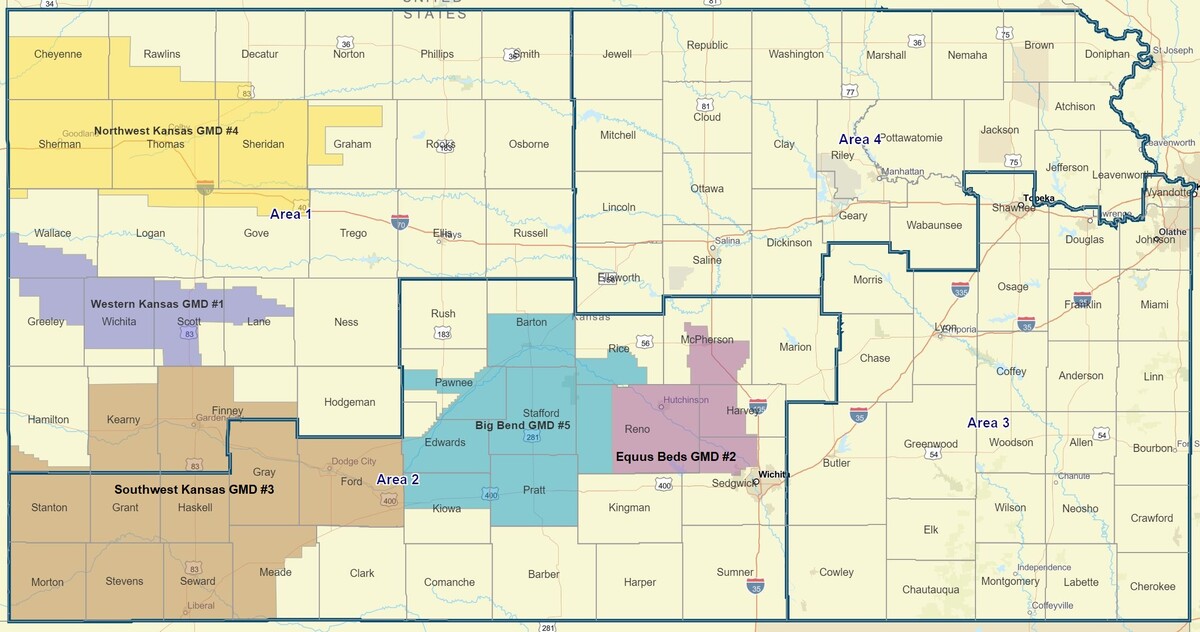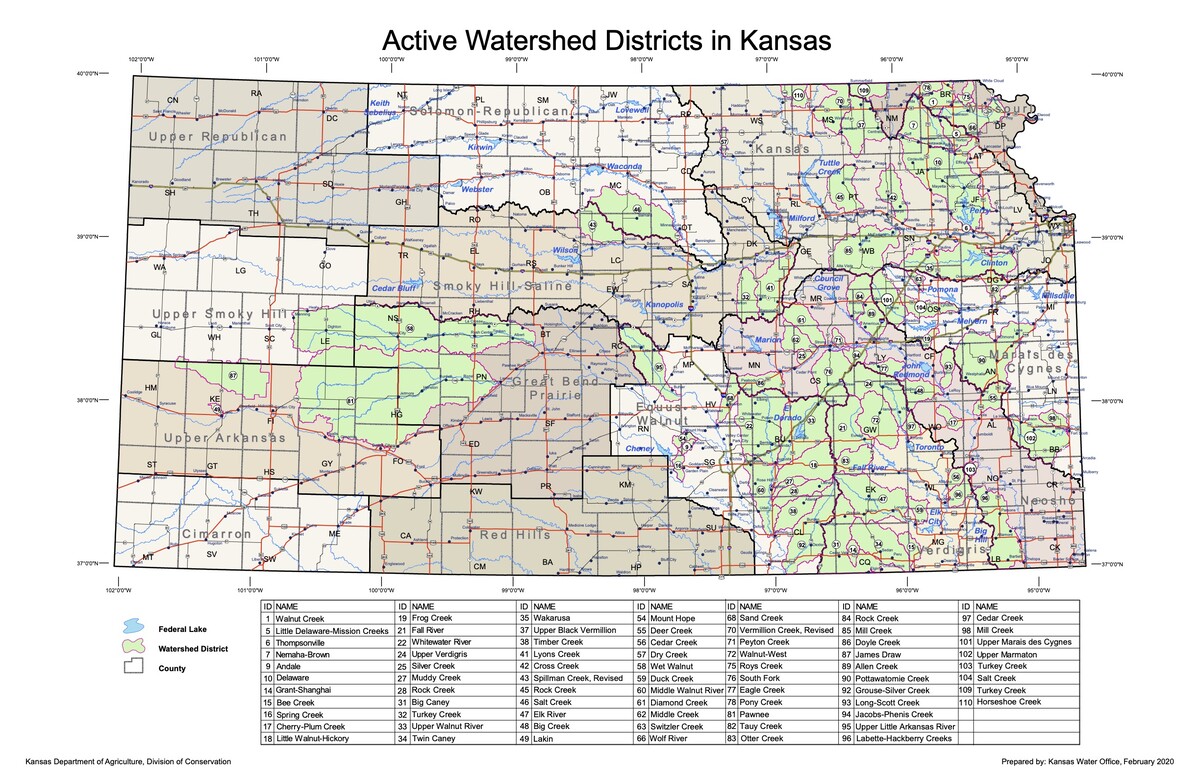Water
Farmers and ranchers recognize water as our Nation’s most precious resource. Your local conservation district offers technical and financial assistance to help producers plan and implement conservation practices that improve water quality and conserve its use.
In Kansas, water quality and water quantity have been identified as a focal point for conservation practices. There are many programs, policies, agencies and organizations whose work focuses on water quality. In Kansas the three primary water agencies are:
- Kansas Water Office: serves as the water planning, polict, coordination and makerting agency for the state.
- Kansas Department of Health & Environment: serves as the water quality regulatory agency for the state.
- Kansas Department of Agriculutre, Division of Water Resources: serves as the water quanitity regulatory agency for the state.
Local conservation districts work in conjunction with all three agencies in the implementation of various programs realted to water quality and water quantity.
Examples of Water Quality Practices
- Nutrient Management
- Prescribed Grazing
- Erosion and Sediment Control Structures
- Filter Strips and Riparian Forest Buffers
- Abandonded Water Well Plugging
More on Water Quality Practices or Technical Assistance
Examples of Managing Water Quantity
- Control Drainage
- Improve Irrigation Infrastructure
- Improve Water Supply
- Improve Moisture Management
More on Managing Water Quantity or Technical Assistance
Examples of Water Conservation Practices
- Irrigation Land Leveling
- Irrigation System, Microirrigation
- Irrigation Water Management
Engage with local water issues through the Regional Advisory Committees
Regional Advisory Committees (RAC) advise the Kansas Water Office (KWO) and Kansas Water Authority (KWA) on local water-related issues, serve as a link to the public, and serve as a link to water management entities. RAC members serve as the eyes and ears for the KWO and KWA in their local community, as well as ambassadors of public input. Members of RACs serve as a vital voice for their communities. All RAC meetings are open to the public. Meeting dates and information, as well as RAC vacancies, can be found on the KWO Website



